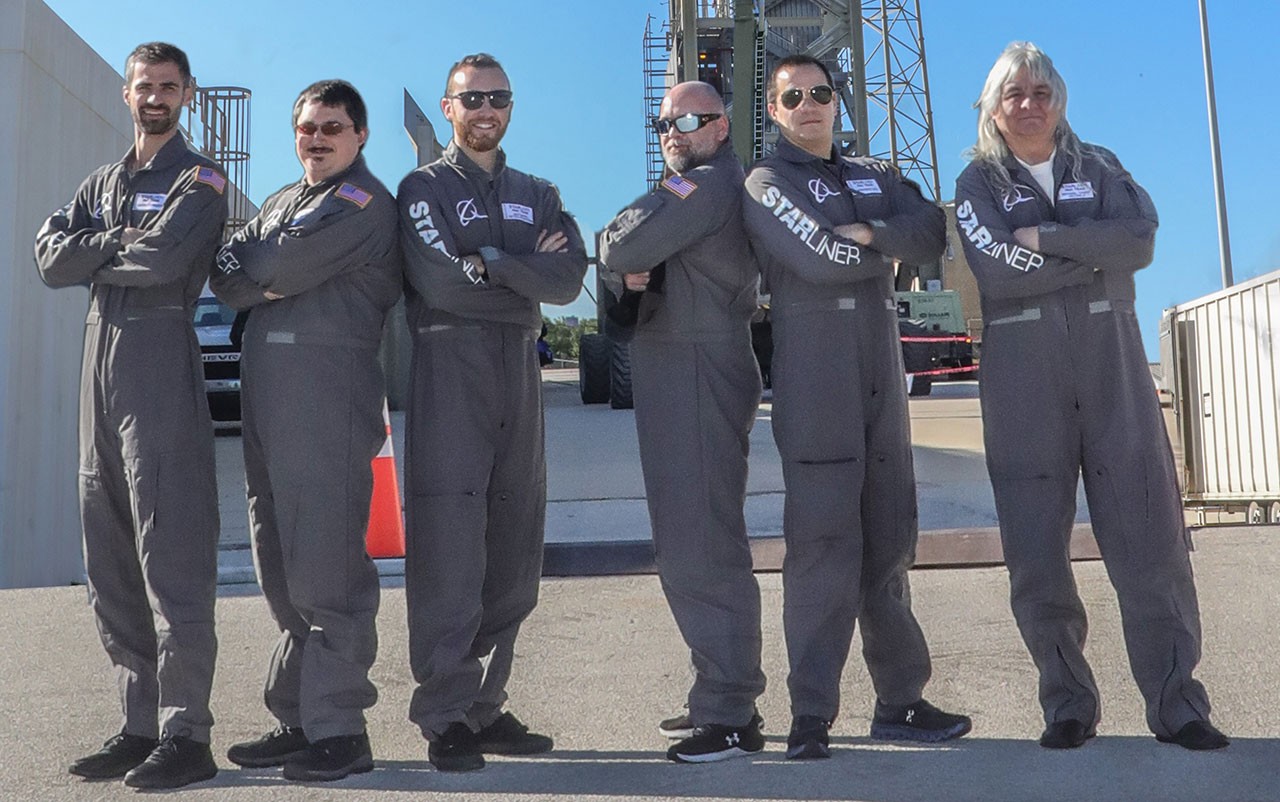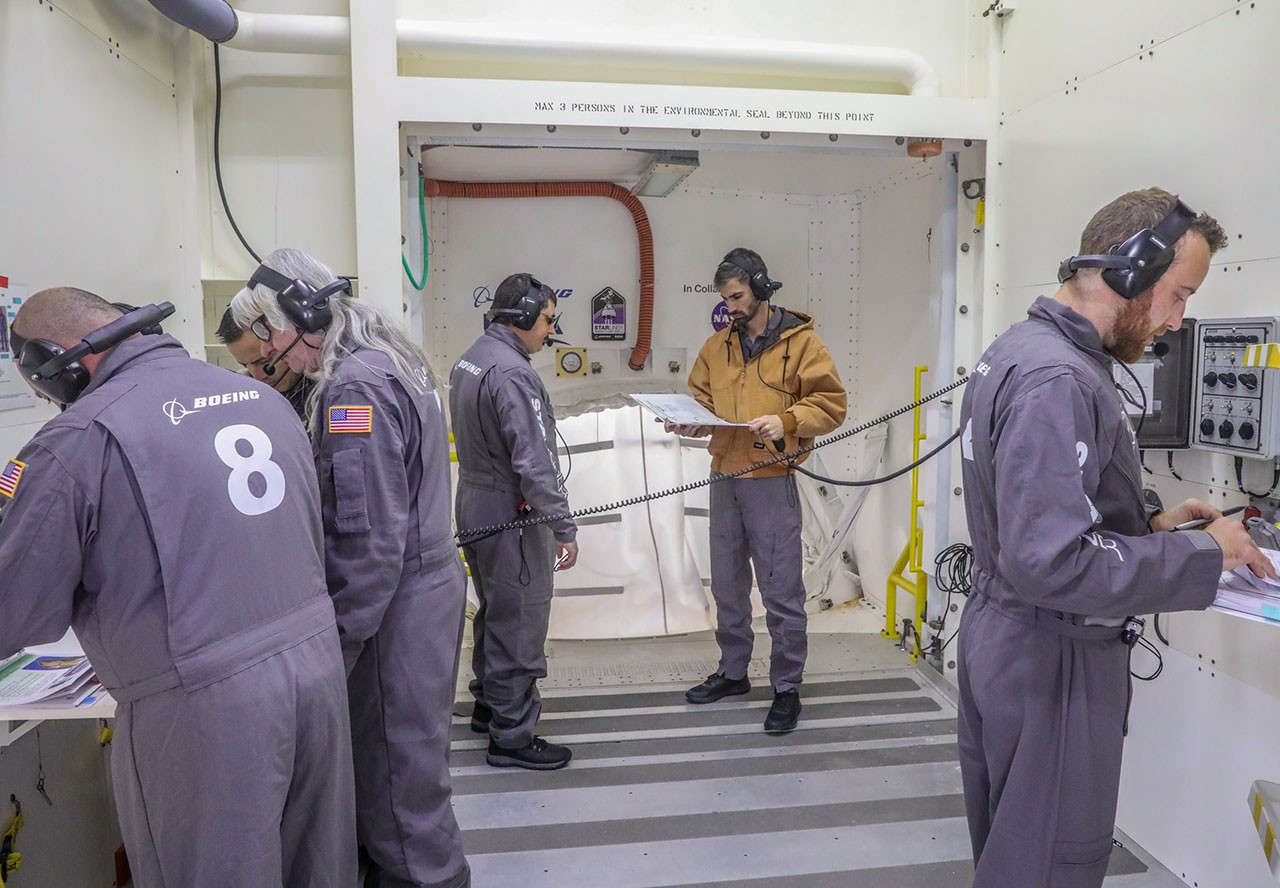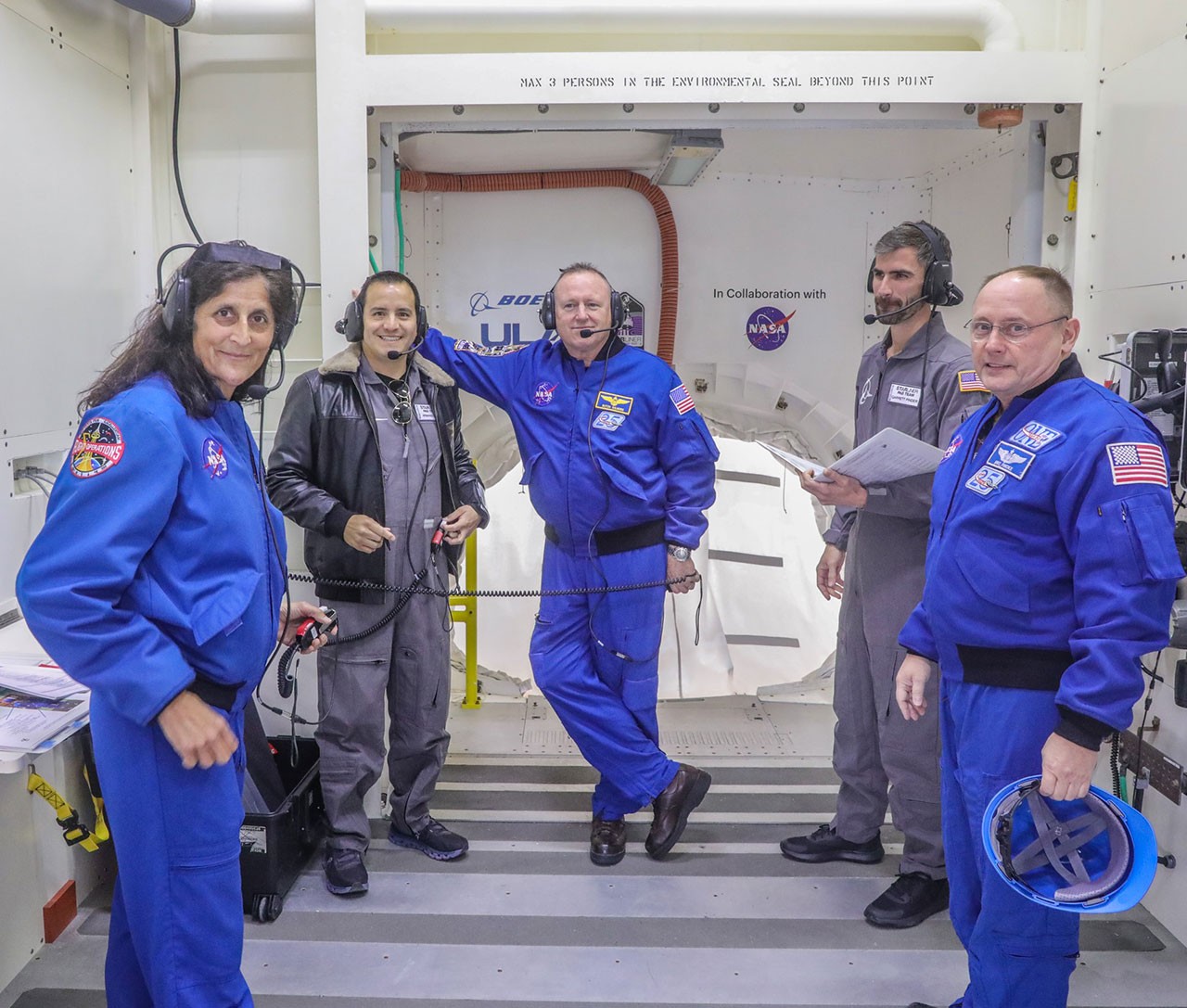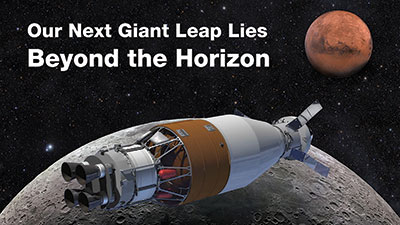Paced for success
Meet Starliner’s safety-focused Pad Team members who keep the spacecraft’s liftoff from the launch pad on schedule.
Docking at the International Space Station requires a precisely timed launch from Earth. In the hours leading up to the CST-100 Starliner’s first crewed flight, Boeing’s Pad Teams work to keep liftoff on schedule — here’s a look at how.
32 hours before launch (L-32 hours)
Action at Space Launch Complex-41 in Florida is in full swing. The Starliner spacecraft, sitting atop a United Launch Alliance Atlas V rocket, arrives at the launch pad. There to greet it are teammates in jumpsuits, waiting to take action.
This is the A Team — also known as Pad Team A.
 Pad Team A from left, Garrett Pinder, Ed Bourne, Jr., Nathaniel Keyek-Franssen, Cason Chernault, Armando Loli and Michael Decarlo. Wayne Noke not pictured. (John Grant photo)
Pad Team A from left, Garrett Pinder, Ed Bourne, Jr., Nathaniel Keyek-Franssen, Cason Chernault, Armando Loli and Michael Decarlo. Wayne Noke not pictured. (John Grant photo)
32 to 24 hours before launch (L-32 to L-24 hours)
Engineers power up the launch vehicle and spacecraft from their respective control rooms. At the same time, Pad Team A heads to the White Room, swiftly performing their set of meticulously rehearsed tasks.
- First up, purging the annulus — where tanks, wiring, plumbing and avionics live. This process allows cool air to flow into the enclosed spacecraft.
- After that, Pad Team A gets organized. They double- and triple-check all the stored equipment, making sure they have everything ready for launch.
- Next, they organize the room.
- Once everything’s accounted for and in place, Pad Team A exits — for now.
 Pad Team A members during an Integrated Crew Exercise. From left, Cason Chernault, Michael Decarlo, Armando Loli, Ed Bourne-Jr, Garrett Pinder and Nathaniel Keyek-Franssen. (John Grant photo)
Pad Team A members during an Integrated Crew Exercise. From left, Cason Chernault, Michael Decarlo, Armando Loli, Ed Bourne-Jr, Garrett Pinder and Nathaniel Keyek-Franssen. (John Grant photo)
 NASA astronauts (in blue) Suni Williams (from left), Butch Wilmore and Mike Fincke, with Starliner Pad Team members Armando Loli (second from left) and Garrett Pinder in the White Room during an Integrated Crew Exercise. (John Grant photo)
NASA astronauts (in blue) Suni Williams (from left), Butch Wilmore and Mike Fincke, with Starliner Pad Team members Armando Loli (second from left) and Garrett Pinder in the White Room during an Integrated Crew Exercise. (John Grant photo)
24 to 12 hours before launch (L-24 to L-12 hours)
Pad Team A and Pad Team B meet up off site to handover operations. The members of the Pad B team then heads back out to the Pad and White Room.
 Pad Team B (left) kneeling, Zach Grove, Kevin Harlinski, Jim Knohl, John Grant and Robert Hughes. Back row (left), Joe Turnbach, Christian Fesdjian, Oborsouis “OB” Saint-Louis and Justin Weisenberger. John Proferes not pictured. (Deborah Circelli photo)
Pad Team B (left) kneeling, Zach Grove, Kevin Harlinski, Jim Knohl, John Grant and Robert Hughes. Back row (left), Joe Turnbach, Christian Fesdjian, Oborsouis “OB” Saint-Louis and Justin Weisenberger. John Proferes not pictured. (Deborah Circelli photo)
They open the Starliner’s hatch and enter the spacecraft.
For the Pad Teams, this flight is special. On board the Starliner will be NASA astronauts Butch Wilmore and Suni Williams.
“Pad Team B is there to make sure all the switches on the control panel are in the right configuration and all the communications are up and running,” said Wayne Noke, Starliner manufacturing engineer and backup lead for Pad Team A. “We want everything to be exactly right for Suni and Butch.”
- Once inside the spacecraft, they ensure the astronauts can clearly communicate with Boeing, Mission Control in Houston and the International Space Station.
- Inside the cabin, they verify the position of over 50 switches.
- They close the hatch before cryogenic fueling of the Atlas V rocket begins.
“It can be easy to get nervous and caught up in the moment,” said Oborsouis “OB” Saint-Louis, manufacturing analyst and Pad Team B member. “That’s why we practice. I know on launch day I’ll just be focused on the task at hand.”
An alarm sounds. It’s time to fuel the rocket.
12 to 4 hours before launch (L-12 hours to L-4 hours)
Pad Team B leaves the launch tower. Cryogenic propellants are loaded in Atlas V.
4 hours before launch (L-4 hours)
As liftoff nears, an SUV pulls up to the launch pad. The doors open, revealing the members of Pad Team A.
“This is really our time to shine,” said Nathaniel Keyek-Franssen, Starliner engineering manager and Pad Team A lead.
- They power up the armored ex-Army vehicles at the base of the launch pad in case a quick and safe exit is required. Then, they head up the launch tower.
- In the White Room, Keyek-Franssen plugs in his headset for real-time updates on the vehicle’s status.
- The team opens the hatch again.
- They perform final preparations to the life support system that prevents carbon dioxide and humidity buildup in the spacecraft.
In parallel, the astronauts begin their journey to the launch pad.
 Pad Team members (in gray, from left) Michael Decarlo and Ed Bourne, Jr. with NASA astronauts Suni Williams and Mike Fincke, backup pilot, at Space Launch Complex-41 during an Integrated Crew Exercise. (John Grant photo)
Pad Team members (in gray, from left) Michael Decarlo and Ed Bourne, Jr. with NASA astronauts Suni Williams and Mike Fincke, backup pilot, at Space Launch Complex-41 during an Integrated Crew Exercise. (John Grant photo)
- Once they arrive, Pad Team A assists them as they enter the spacecraft.
- They then help the astronauts plug in their vital communications cables and life support umbilicals.
- Then, they strap Wilmore and Williams in a five-point safety harness.
- The Pad Team then runs leak checks on the astronaut’s custom-made spacesuits.
Armando Loli, engineering project manager and seven-year Starliner veteran, has the honor of helping to strap in the astronauts.
“At this point, I’ve been around Suni and Butch quite a bit,” he said. “It’s such an honor to strap in not only my crew but my friends, as we send them off on this mission.”
After the astronauts are safely on board, other members of the team, including Keyek-Franssen, check to see if the crew needs anything before closing the hatch. As lead, Keyek-Franssen said, “Immediately before closing the hatch, it won’t be a goodbye to the crew, it will be: see you when you get home.”
With that, two members of Pad Team A close the hatch.
- The team performs a leak check by pressurizing the Starliner capsule and monitoring for unexpected pressure changes.
- They move all the equipment to a storage room so it remains safe during launch.
35 minutes before launch (L-35 minutes)
The members of Pad Team A head down the elevator to ground level, get back in their SUV and drive to a safe viewing point to watch the launch.
For more Starliner highlights, follow @BoeingSpace on X, formerly known as Twitter, starlinerupdates.com and the CFT mission website.





